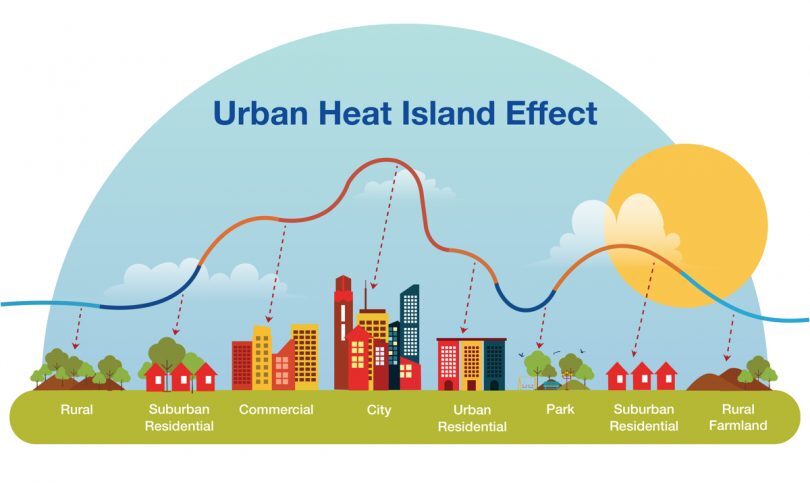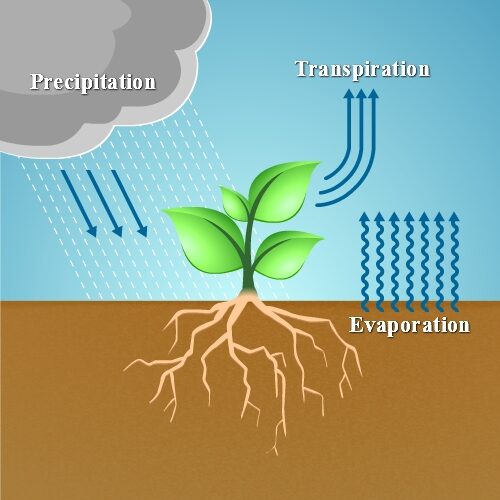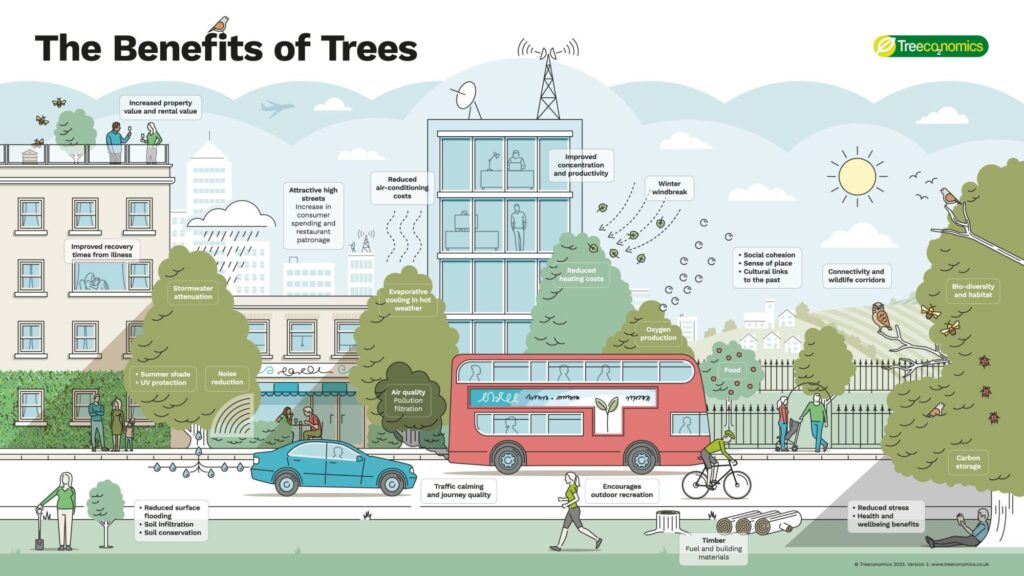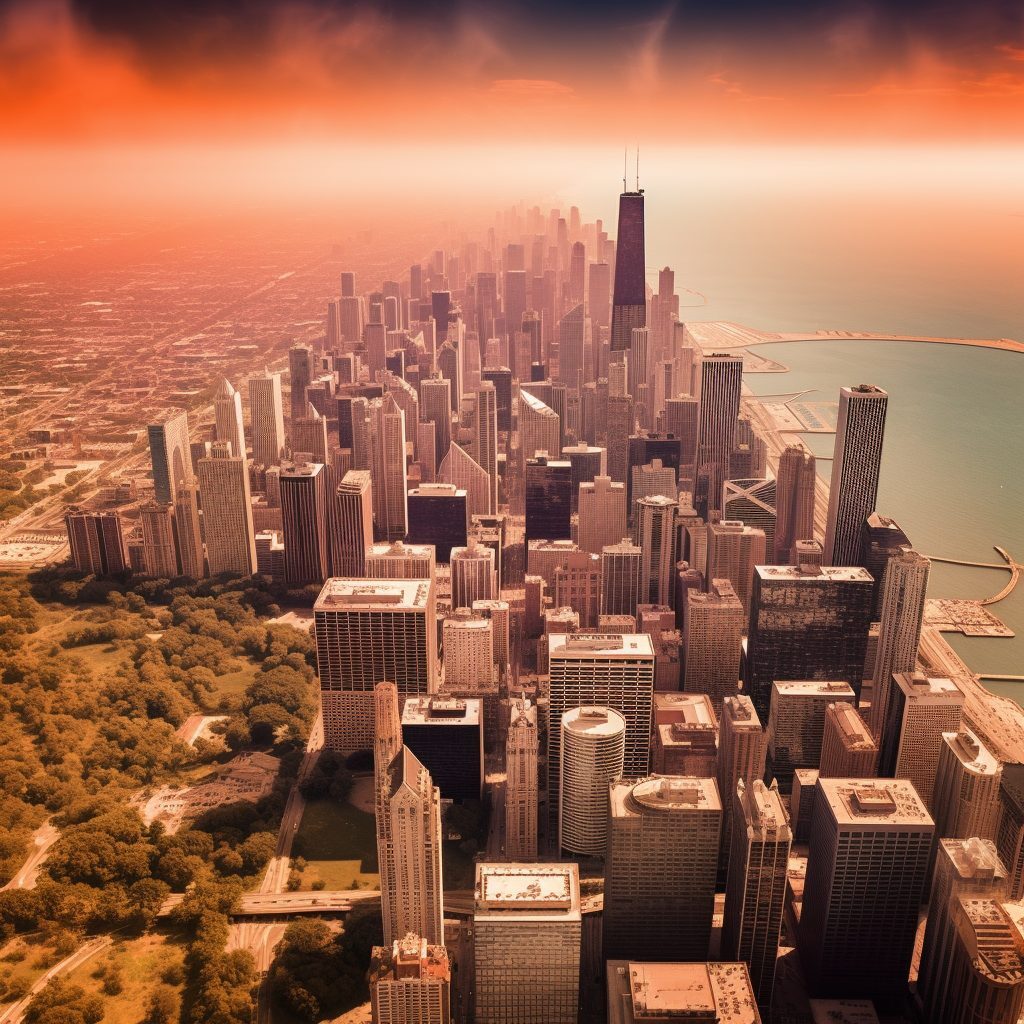As we huddle indoors during these frosty winter months, it’s a perfect time to reflect on the blissful warmth of summer—and how trees play a crucial role in making it more bearable. Urban environments are often several degrees hotter than their surrounding areas due to the heat island effect, a phenomenon caused by concrete, asphalt, and other surfaces that absorb and radiate heat. But don’t sweat it—trees provide a natural, cost-effective way to cool things down.
The Heat Island Effect and Thermal Comfort
Urban areas are particularly prone to the heat island effect, where dense infrastructure traps heat and raises temperatures. This can result in significantly higher daytime and even nighttime temperatures compared to nearby rural areas. Factors like reduced vegetation and an abundance of heat-absorbing surfaces exacerbate this effect, making urban areas less comfortable and more dangerous during heat waves.

Researchers use tools like the Physiologically Equivalent Temperature (PET) to measure how humans perceive temperature outdoors. PET accounts for factors like air temperature, humidity, solar radiation, and wind speed. Studies show that shaded areas under tree canopies can reduce PET by an average of 5.61°C compared to exposed areas. The benefits are even greater when trees with larger crown diameters and dense canopies are strategically planted.
How Trees Keep Urban Areas Cool
Trees combat urban heat in two primary ways: shading and evapotranspiration.
- Shading: Tree canopies block solar radiation, reducing surface temperatures and lowering the radiant heat that makes urban spaces uncomfortable. This shading effect significantly cools streets, parks, and buildings, making outdoor areas more pleasant.
- Evapotranspiration: Trees absorb water through their roots and release it into the atmosphere through their leaves. This process cools the air around them, similar to how sweating cools the human body. Evapotranspiration combined with shading can lower air temperatures in urban areas by as much as 3.0°F (1.6°C) on average.

Co-Benefits of Urban Trees
Beyond cooling, trees offer numerous additional advantages that enhance urban life:
- Reduced energy use: Shading buildings reduces the need for air conditioning, cutting energy costs and greenhouse gas emissions. Urban forestry programs have been shown to lower energy demand by up to 10%.
- Improved air quality: Tree leaves trap airborne pollutants, including particulate matter and nitrogen oxides. This not only clears the air but also contributes to better respiratory health.
- Stormwater management: Trees absorb rainfall, reducing runoff and preventing urban flooding. They also filter pollutants, improving water quality.
- Enhanced quality of life: Studies link green spaces to lower stress, reduced heat-related illnesses, and even decreased mortality rates during heatwaves.
- Habitat creation: Trees provide essential shelter and food for urban wildlife, from pollinators to birds and small mammals.
Designing Cooler Cities with Trees
Urban planners and arborists can maximize the cooling benefits of trees by prioritizing species with large crown diameters and dense foliage. These trees block more sunlight and provide better thermal comfort. Additionally, creating green corridors and urban parks helps distribute these benefits more widely, improving the livability of cities.

Strategically planted trees also address equity issues, as underserved communities often lack sufficient greenery and suffer disproportionately from heat island effects. Expanding tree cover in these areas is an essential step toward environmental justice and climate resilience.
Ready to Cool Down Next Summer?
Trees are much more than a summer escape from the heat—they’re a lifeline for urban areas grappling with rising temperatures. As we endure the chill of winter, now is the perfect time to plan for the warmer months ahead. Let Homer Tree Care’s expert arborists help you create a cooler, greener, and more comfortable environment. Contact us today to explore tree planting, maintenance, and care options tailored to your needs.

